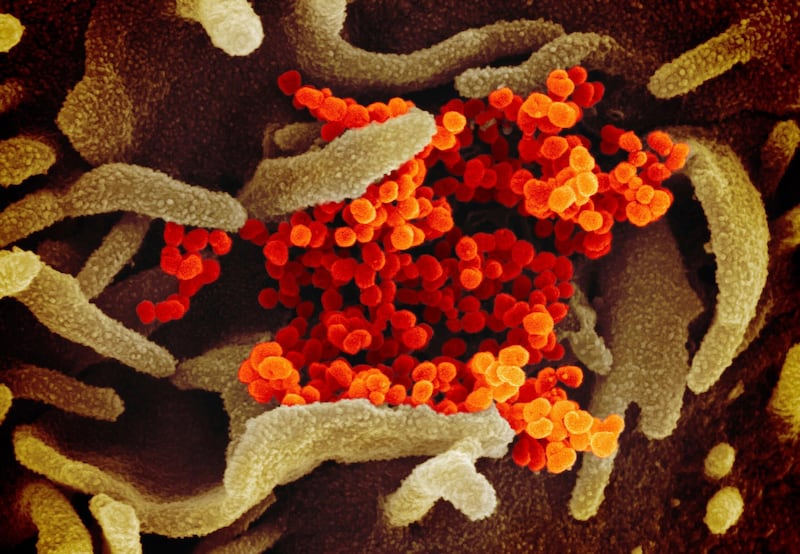An epidemic is an unexpected blight on an already rocky energy landscape. But as coronavirus hits oil demand, Opec has to decide whether its pursuit of oil market balance is coming closer within reach or receding like fairytale gold.
The shutdown of Chinese industry, travel and business just after the country’s New Year left people stranded in the wrong place and hit demand for jet and road fuels first. The number of trips has fallen 70 per cent. Now an unwanted armada of ships is piling up outside Chinese ports, reducing the need for marine fuels just as the industry was expecting a bonanza from new anti-pollution rules.
Petrochemical companies have had to shut down operations, while Chinese firms have attempted to declare force majeure on liquefied natural gas (LNG) imports, in the face of refusal by suppliers, to avoid taking delivery of cargoes they cannot use. Brent crude prices have fallen from $67 at the end of last year to around $56 per barrel now.
Analysts continue to vary on whether the coronavirus outbreak is being contained. Shanghai-based financial service company Horizon Insights has drawn comparisons with the 2003 SARS epidemic.
That had its biggest effect on tertiary industry and retail consumption – both of which have since grown as a share of China’s gross domestic product. It occurred after the New Year, when workers had already returned to their cities of employment. The Chinese economy had already slowed substantially compared to its rapid growth in 2003.
Corporate and household leverage is far higher today, rendering the country more vulnerable to a bad debt crisis. This will be exacerbated by a likely fiscal and monetary stimulus once the disease is under control.
The Opec+ alliance, led by Saudi Arabia and Russia, instituted output cuts in 2017 with the intention that they would be short-term until excess stocks were drained. After a series of extensions, the group’s December meeting had already committed to reduce production further, by 1.7 million barrels per day (bpd) in all, to deal with an expected first-quarter slump in demand for its crude.
The epidemic now reveals how dangerously dependent the exporters’ group has become on Chinese growth, which made up three quarters of last year’s global gain. India, whose own economy has also been sluggish, is the only other country with the same magnitude of demand expansion.
US shale output has not collapsed, and Opec’s market share has consequently steadily shrunk. Geopolitical tensions in the Middle East last year did not scare the market nor materially harm output. This year was expected finally to show weaker American production, as investors lose patience, but this was offset by stronger output in other non-Opec producers such as Norway, Brazil and Guyana.
The repeated extensions and then deepening of cuts have just about defended prices during a period of solid, if unspectacular, world growth. How would the pact cope with a major slowdown or recession? We may be about to find out.
As news of the virus emerged, its monitoring committee met two weeks ago in Vienna and recommended a further 600,000 bpd cut for consideration at the organisation’s March meeting.
On Wednesday, Opec’s monthly report cut its forecast for global oil demand growth by 230,000 bpd to 990,000 bpd. It estimated the requirement for its crude at 29.3 million bpd, above its actual January level of 28.86 million bpd, as Saudi Arabia lowered output and Libyan production was slashed by the shutdown of its loading terminals. This was Opec’s lowest production rate since 2009 – an entire decade of economic recovery has been lost.
The International Energy Agency (IEA)’s assessment was even gloomier, cutting world demand projections by 480,000 bpd over the whole year, and 1.32 million bpd in the first quarter. This would be the first fall in growth in the first quarter since the 2009 financial crisis.
If the IEA’s assessment plays out, Opec+ would have to maintain the additional production cuts from April to September just to make up for the first quarter hit to demand. But things could get worse. The world dodged recession last year, but the virus has dampened the expected pick-up at the start of this year.
And Donald Trump’s mercantilist trade deal with China rested heavily on oil, LNG and agricultural products. The $50 billion (Dh183.6bn) of additional fuel China was supposed to buy over this year and next already looked unrealistic – if American oil met all of its pre-virus expected demand growth this year, it would add only $12bn. But now the aspirations are completely out of reach. Coronavirus could be a fig-leaf for both sides to cover an embarrassingly failed deal, but it could also lead to a collapse of the trade truce.
With this difficult demand outlook, if OPEC makes yet another cut, will it be temporary? Again, Saudi Arabia and its Gulf allies, the UAE and Kuwait, will have to bear the brunt. Iran’s exports could dry up entirely during the virus episode, if its sole remaining paying customer China does not want its crude, but this takes out only 300 000 bpd. The Libyan outage could be important, whether resolved quickly or prolonged. But the limits of cooperation with Iraq, Nigeria and Russia may be near, and even Venezuela seems to have bottomed out.
A decade of world demand expansion has essentially been lost to Opec. The 2020s may be less favourable as non-oil technologies gain, and a production deal that has coped with the good times now needs to struggle through a morass. As economic stormclouds gather, the alliance needs to judge whether to recalibrate its aspirations of price and volumes.
Robin M. Mills is CEO of Qamar Energy, and author of The Myth of the Oil Crisis







